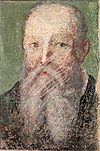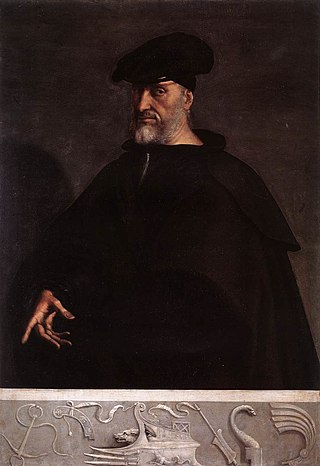
Andrea Doria, Prince of Melfi was a Genoese statesman, condottiero, and admiral, who played a key role in the Republic of Genoa during his lifetime.

The House of Doria originally de Auria, meaning "the sons of Auria", and then de Oria or d'Oria, is an old and extremely wealthy Genoese family who played a major role in the history of the Republic of Genoa and in Italy, from the 12th century to the 16th century. Numerous members of the dynasty ruled the republic first as Capitano del popolo and later as Doge.

Agnolo di Cosimo, usually known as Bronzino or Agnolo Bronzino, was an Italian Mannerist painter from Florence. His sobriquet, Bronzino, may refer to his relatively dark skin or reddish hair.
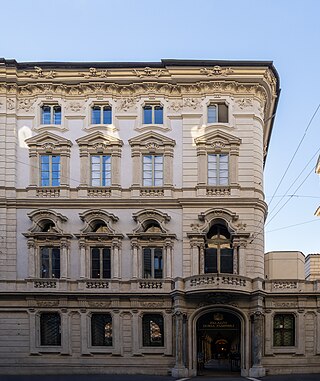
The Galleria Doria Pamphilj is a large private art collection housed in the Palazzo Doria Pamphilj in Rome, Italy, between Via del Corso and Via della Gatta. The principal entrance is on the Via del Corso. The palace façade on Via del Corso is adjacent to a church, Santa Maria in Via Lata. Like the palace, it is still privately owned by the princely Roman family Doria Pamphili. Tours of the state rooms often culminate in concerts of Baroque and Renaissance music, paying tribute to the setting and the masterpieces it contains.

The Portrait of Andrea Doria is a painting finished c. 1526 by the Italian High Renaissance painter Sebastiano Del Piombo. It was painted after Sebastiano had fully mastered his Roman style. The painting depicts Andrea Doria, a famed naval commander from Genoa. Doria had rescued the city from French control and was made a prince as a reward. The naval symbols on the relief at the bottom of the painting emphasize Doria's rank of Admiral. The imitation antique relief at the bottom of the painting was likely included at the wishes of the patron.
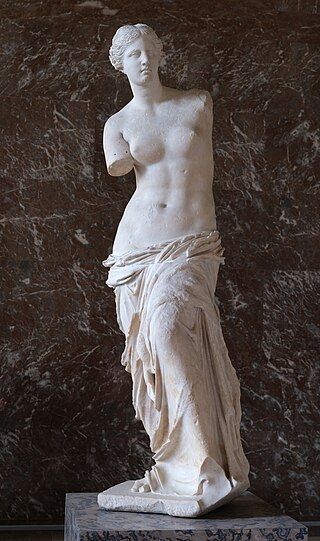
Depictions of nudity include all of the representations or portrayals of the unclothed human body in visual media. In a picture-making civilization, pictorial conventions continually reaffirm what is natural in human appearance, which is part of socialization. In Western societies, the contexts for depictions of nudity include information, art and pornography. Information includes both science and education. Any ambiguous image not easily fitting into one of these categories may be misinterpreted, leading to disputes. The most contentious disputes are between fine art and erotic images, which define the legal distinction of which images are permitted or prohibited.

Giovanni Andrea Doria (1539–1606), also known as Gianandrea Doria, was an Italian admiral from Genoa.
Andrea Doria (1466–1560) was an Italian (Genoese) admiral.

Gioacchino Assereto was an Italian painter of the early Baroque period and one of the most prominent history painters active in Genoa in the first half of the 17th century.
Events from the year 1530 in art.
Niccolò Pisani (fl.1350–1354) was a Venetian admiral renowned for his victories during the 14th Century War of the Straits between the Republic of Venice and its rival Italian republic, Genoa.
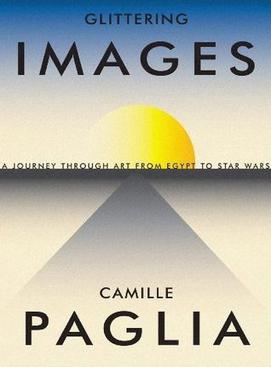
Glittering Images: A Journey Through Art from Egypt to Star Wars is a 2012 book by American cultural critic Camille Paglia, in which the author discusses notable works of applied and visual art from ancient to modern times. Paglia wrote that she intended it to be a personalized "journey" through art history, focusing on Western works. Paglia writes that she felt inspired to write given that she worries 21st century Americans are overexposed to visual stimulation by the "all-pervasive mass media" and must fight to keep their capacity for contemplation.

Genoa is a city in and the capital of the Italian region of Liguria, and the sixth-largest city in Italy. In 2023, 558,745 people lived within the city's administrative limits. While its metropolitan city has 813,626 inhabitants, more than 1.5 million people live in the wider metropolitan area stretching along the Italian Riviera.

Giovanni Carlo Doria (1576–1625) was a Genoese art collector and mecenas. A son of Agostino Doria, doge of Genoa in 1601-1603, he was a prominent member of one of the richest and most influential families of the Republic of Genoa; his brother Giovanni Stefano Doria (1578-1641) became the 101st doge of Genoa (1633-1635) and was considered the richest man in Italy in his day. Giovanni Carlo was married to Veronica Spinola, daughter of Ambrogio Spinola. He was given the Order of Santiago by Philip III of Spain.
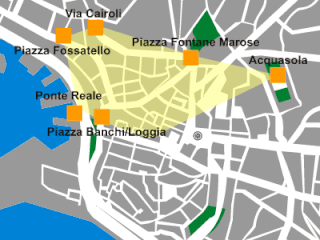
Maddalena is a neighbourhood in the old town of the Italian city of Genoa. It was one of the six sestieri of ancient Genoa. At present it is part of the Genoa's city Municipio I.
Giovanni Doria may refer to:
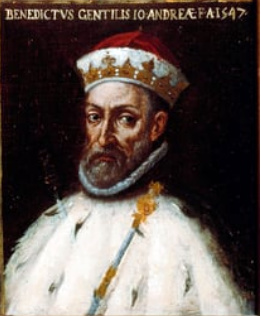
Benedetto Gentile Pevere was the 55th Doge of the Republic of Genoa.
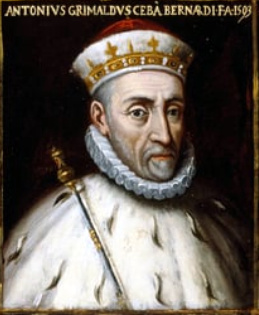
Antonio Grimaldi Cebà was the 79th Doge of the Republic of Genoa.

The Villa del Principe, Palazzo del Principe, or Palace of Andrea Doria in Fassolo is one of the main historical suburban villas of Genoa, Italy. It was built in the 16th century in an area that it is now located in the city center, but at the time of the construction of the villa was just outside of the city walls towards Capo di Faro and the Lanterna.















